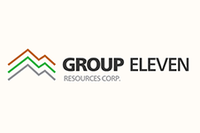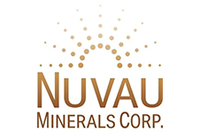Despite falling zinc prices and sluggish demand, major producer Xstrata is expanding its McArthur River lead-zinc mine in Australia’s Northern Territory.
Zinc expansion likely to continue
Despite hurdles for zinc producers, preparation for the expansion of mined-zinc production continues.
Even after announcing rescheduled 2012 expenditures of $1 billion, Xstrata (LSE:XTA) has approved a $360 million expansion for its McArthur River lead-zinc mine in Australia’s Northern Territory.
The third phase of the McArthur River mine expansion plan will more than double annual ore production and increase zinc production to 380,000 tonnes a year. With an average concentrate content of 46 percent zinc and plans for an on-site lead and zinc processing facility, the project — if approved by the Territory Resources Department — will increase available ore reserves to 115 million tonnes, and will become the world’s largest zinc resource.
Junior acquisitions have also continued, with Vancouver-based Canadian Zinc (TSX:CZN) announcing a merger with Paragon Minerals (TSXV:PGR). Paragon’s main focus is its South Tally Pond precious metals property in Central Newfoundland. The property’s 1.24 million tonnes of inferred zinc (7.5 percent zinc equivalent grade cut-off) add to Canadian Zinc’s Prairie Creek property in the Northwest Territories.
Following the much bigger acquisitions of Breakwater Resources (TSX:BWR) and Farallon Mining by Nyrstar (EBR:NYR), Canadian Zinc appears to be one of the few companies recently making news for its acquisition of new properties.
Majors’ performance
Five months of depressed refined zinc prices have taken their toll on Xstrata as the prospective partner for a merger with Glencore International (LSE:GLEN) announced that its first-half profits fell 33 percent on lower commodity prices.
“Our financial performance in the first half of the year reflected a cyclical downturn in commodity prices and the transition to our next generation of lower cost mines,” CEO Mick Davis said in the statement.
Net income fell to US$1.94 billion from $2.92 billion a year earlier, the Zug, Switzerland-based company said in an August 7 statement.
“Commodity prices fell significantly, in particular for nickel and zinc, compared to the same period last year.”
Three-month delivery zinc, which declined by 15 percent to $1,978/metric ton, is just one of the commodities that contributed to Xstrata’s falling profits. Despite having higher-than-projected profits over the period, Xstrata also announced that it has lowered investment plans for 2012 from US$8.2 billion to $7.2 billion, deferring the $1 billion worth of expenditures to a later date.
Xstrata was not alone as Korea Zinc Company (KRX:010130), the world’s third-biggest producer of refined zinc, recorded a 6.8 percent fall in second-quarter profits on the back of falling metal prices and sales that were more sluggish than expected.
Net income for Korea Zinc was 166.2 billion won (US$146 million) in the three months ended June 30, compared with a revised 178.3 billion won a year earlier, the company reported.
Beyond contending with falling zinc prices over this period, rising operational costs for extracting and processing zinc ore were also an issue for miners and refiners.
Nyrstar, the world’s largest refiner of zinc, announced last month that its profits have fallen on account of lower zinc prices and treatment fees (the price paid by miners to have ore refined). Nyrstar also highlighted the impact of increasing zinc mining costs.
The company’s first-half statement notes that the cash cost of zinc mining rose to $1,255 a tonne from $1,095 a tonne in the previous six months. The cost of smelting operations also increased 7 percent from the previous half to 568 euros a tonne, the company said.
Securities Disclosure: I, James Wellstead hold no investment interest in any company mentioned in this article.


